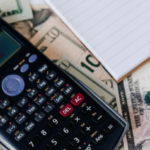What is Chapter 13 Bankruptcy?
The two basic forms of personal bankruptcy are Chapter 13 and Chapter 7.
Chapter 13 bankruptcy means a consumer can potentially enable a person to keep a mortgaged house or car on which they’ve defaulted, provided they have a steady income and are willing to comply with a three to five year court approved repayment plan. Filing under Chapter 13 does not, by any means, guarantee that you will be allowed to keep your house, though. If an acceptable plan to catch up on your debts is not agreed upon, Chapter 13 may not allow you to keep your property. If the bank or financing company has an unpaid mortgage or lien on the property, and they have reason to believe that their prospects for recouping their funds are slim, Chapter 13 may not be an effective shield against having to give up your home.
Although neither is desirable, Chapter 13 may be considered less severe than Chapter 7. Unlike Chapter 13, Chapter 7 involves liquidation of all non-exempt assets and is referred to as “straight bankruptcy”. Chapter 13 is far from a “cure all” remedy, however, and will probably require you to stick with a court imposed repayment plan. As a point of information, personal bankruptcy plans, such as Chapter 13, usually do not wipe out child support obligations, alimony, fines, or taxes. Chapter 13 and Chapter 7 bankruptcy proceedings will also not excuse you from some student loan obligations.


